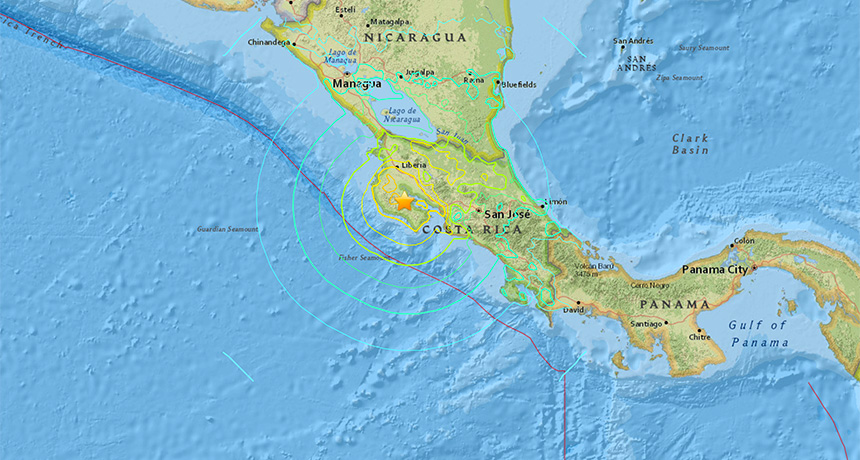
WEAK SPOTS A magnitude 7.6 earthquake that shook Costa Rica in 2012 revealed earthquake-prone weak spots in Earth’s crust, new research shows. Colored lines mark the intensity of shaking felt at that location from the epicenter (star), with yellow lines marking the more intense shaking.
USGS Earthquake Hazards Program






